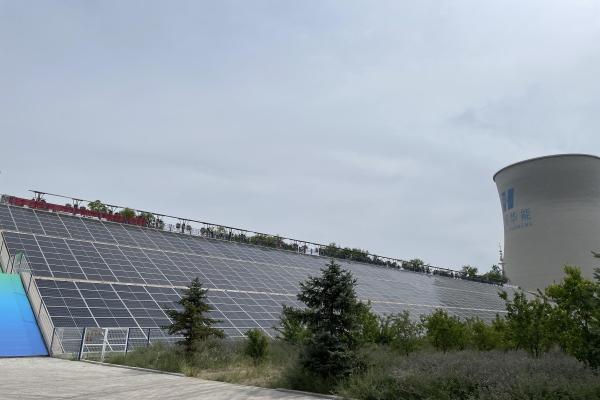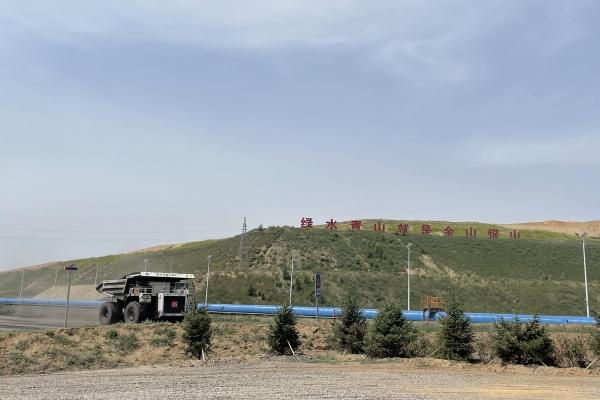Tech adds green touch to coal mining industry in Inner Mongolia
- By Zhu Bochen
 0 Comment(s)
0 Comment(s) Print
Print E-mail China.org.cn, July 3, 2023
E-mail China.org.cn, July 3, 2023
Despite the adverse environmental effects of traditional coal mining, sustainable technologies are playing a vital role in revolutionizing the sector in China's northern Inner Mongolia autonomous region, making it more eco-friendly, energy-efficient and forward-looking.

Solar PV power installations inside the factory area of Northern Weijiamao Coal Power in Ordos, Inner Mongolia, June 27, 2023. [Photo by Zhu Bochen/China.org.cn]
As part of the region's carbon reduction initiative, one prominent project underway in the city of Ordos is the distributed rooftop photovoltaic (PV) power system of Northern Weijiamao Coal Power. In November 2021, the company began installing a 6MW solar power plant spanning its building rooftops and conveyor belts, with the aim of utilizing the generated electricity to power a fleet of 12 heavy-duty trucks.
The company informed China.org.cn that these electric-powered trucks can save up to 15% of the overall costs compared with their fossil fuel counterparts.

A dump truck carries coal from the Weijiamao opencast coal mine in Ordos, Inner Mongolia, June 27, 2023. [Photo by Zhu Bochen/China.org.cn]
Statistics from the company show that the solar panels have not only significantly reduced the consumption of standard coal by 2,400 tons annually, but also have the capacity to generate over 8 million kWh of electricity each year.
With a projected lifespan of 25 years, the company's PV installation is estimated to generate a total of 200 million kWh of electricity. This will result in a saving of 60,000 tons of standard coal and a reduction of around 220,000 tons in carbon dioxide emissions.
China's carbon peaking and carbon neutrality targets have created significant opportunities for the development of the PV industry. During the 13th Five-Year Plan period (2016-2020), the output of the sector's four major segments — polysilicon, silicon wafers, PV cells and PV modules — doubled, accounting for more than two-thirds of the global total. This marked a significant milestone in achieving a localized industrial chain across China.
Technological advancements in the PV industry have resulted in lower costs of each link in the industrial chain. From 2016 to 2020, the cost of polysilicon decreased by 24.9%, while the prices of silicon wafers, PV cells and PV modules all fell by over 50%. Additionally, the price of PV systems witnessed a significant decrease of 47.2%.
A report from the Ministry of Industry and Information Technology (MIIT) also reveals that the first half of 2022 witnessed remarkable year-on-year growth rate of over 45% in key segments of the country's photovoltaic industry chain.
According to S&P Consulting, a consultancy firm based in Beijing, the newly installed capacity of the country's PV industry is projected to reach 93 million kWh by 2027, with power generation capacity estimated to hit 600 billion kWh.
Currently, China boasts the world's most complete PV industry chains, and is also home to a group of world-class businesses involved in every major link along the PV industry chains.
For example, Trina Solar, a world-leading PV system supplier based in Jiangsu province, has achieved an impressive 25 world records in solar cell efficiency and module power. The company established a new subsidiary in Jungar Banner, Ordos, in November 2021, aiming to maximize the potential of the region's abundant solar resources and eco-friendly transformation of the coal mining industry, thereby unlocking fresh business prospects.






Go to Forum >>0 Comment(s)